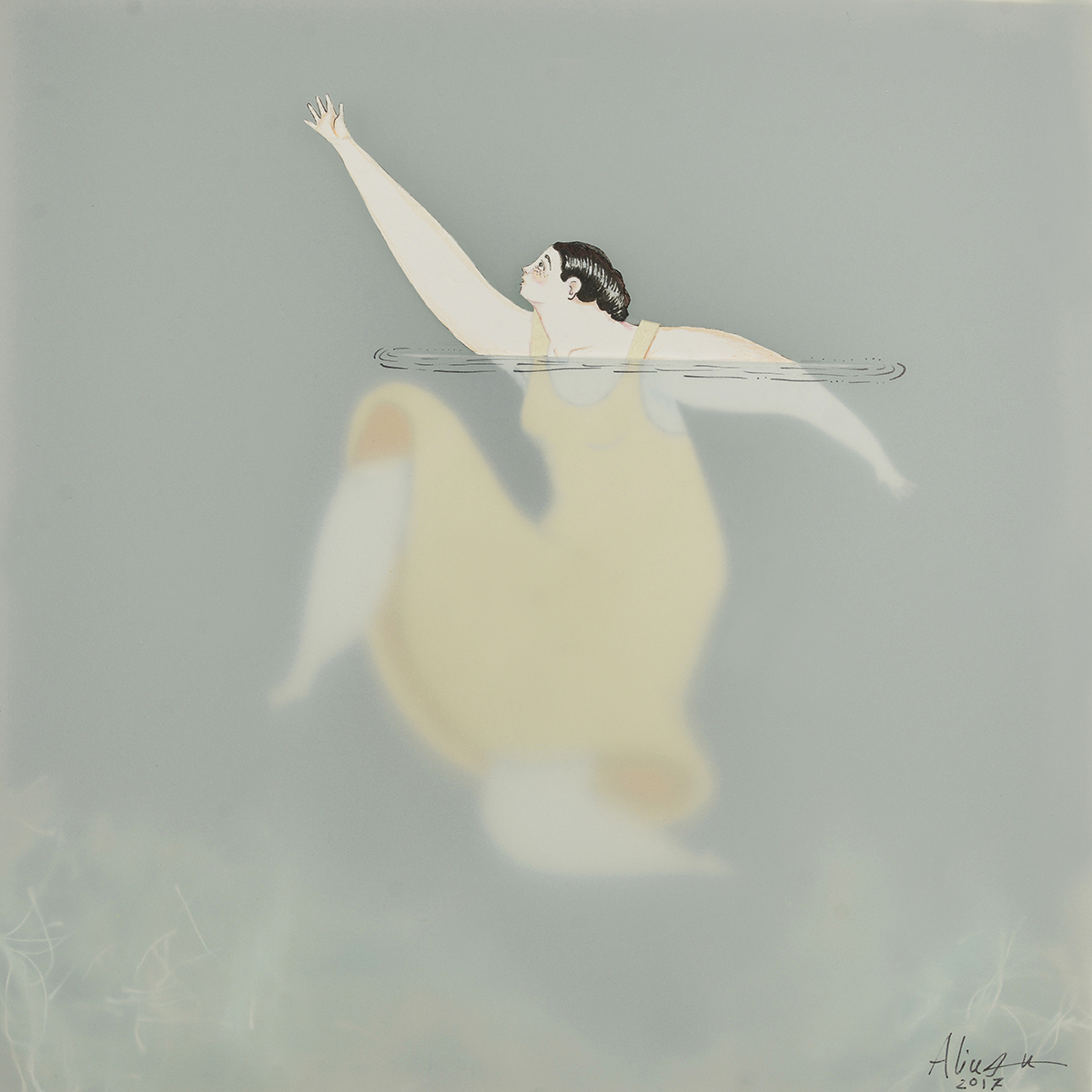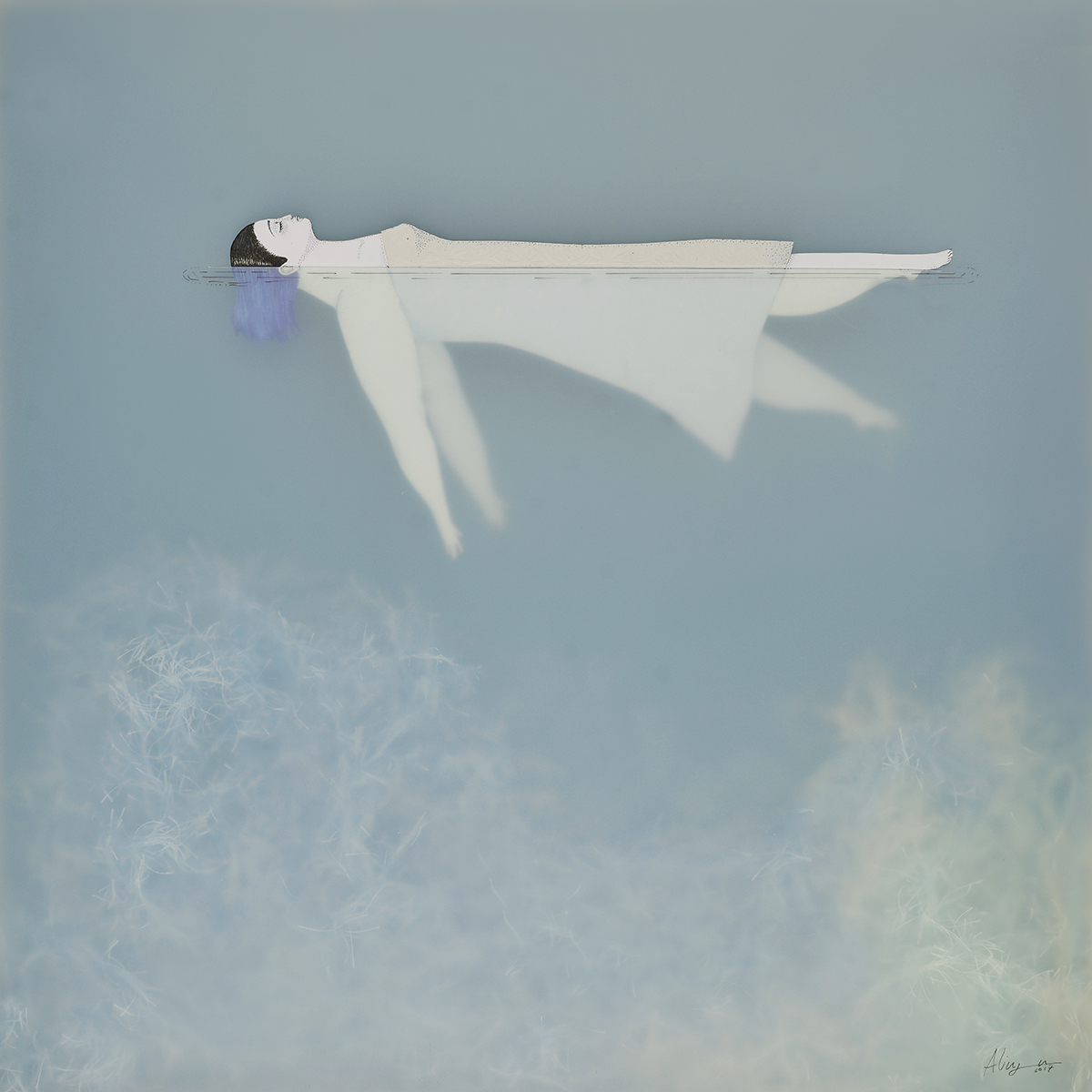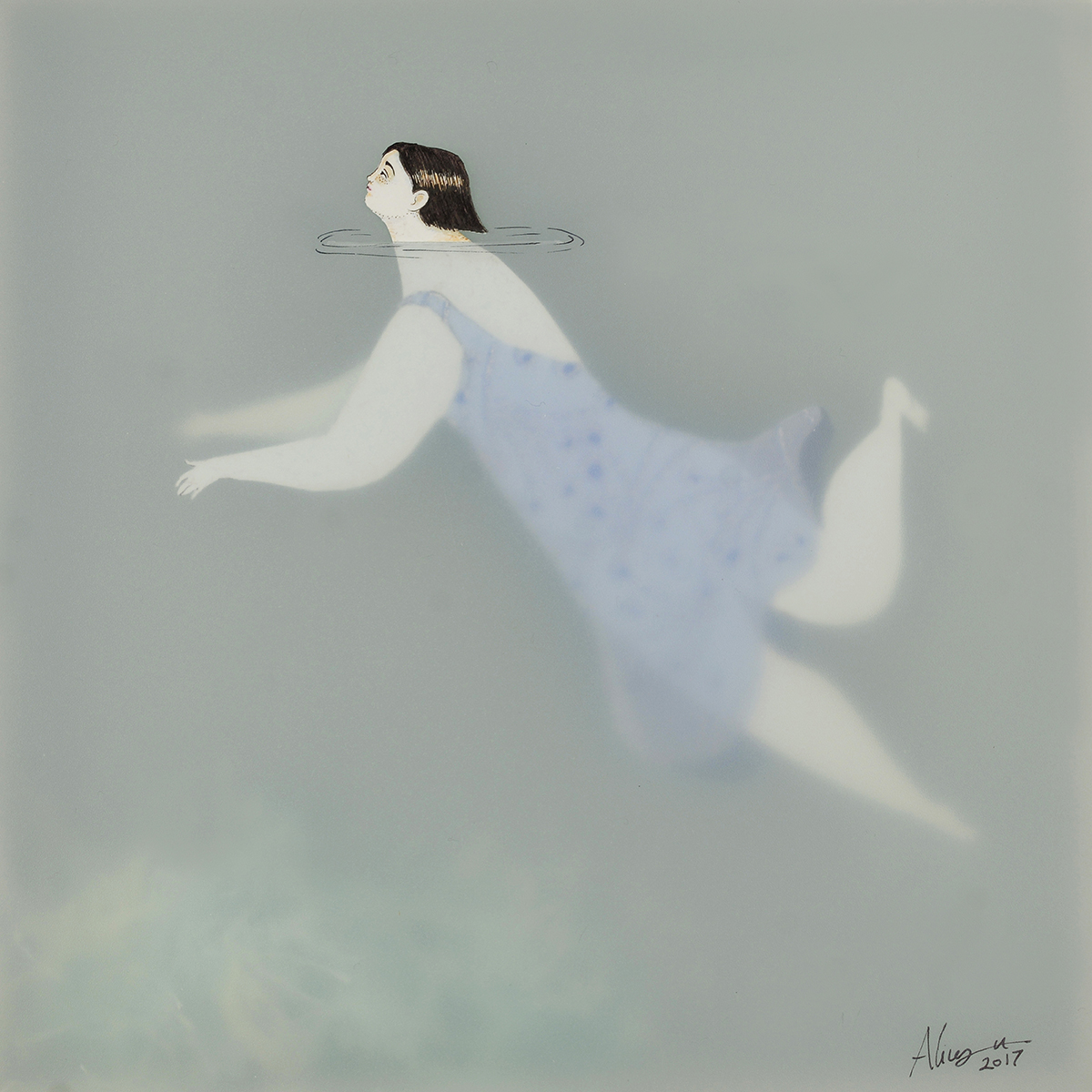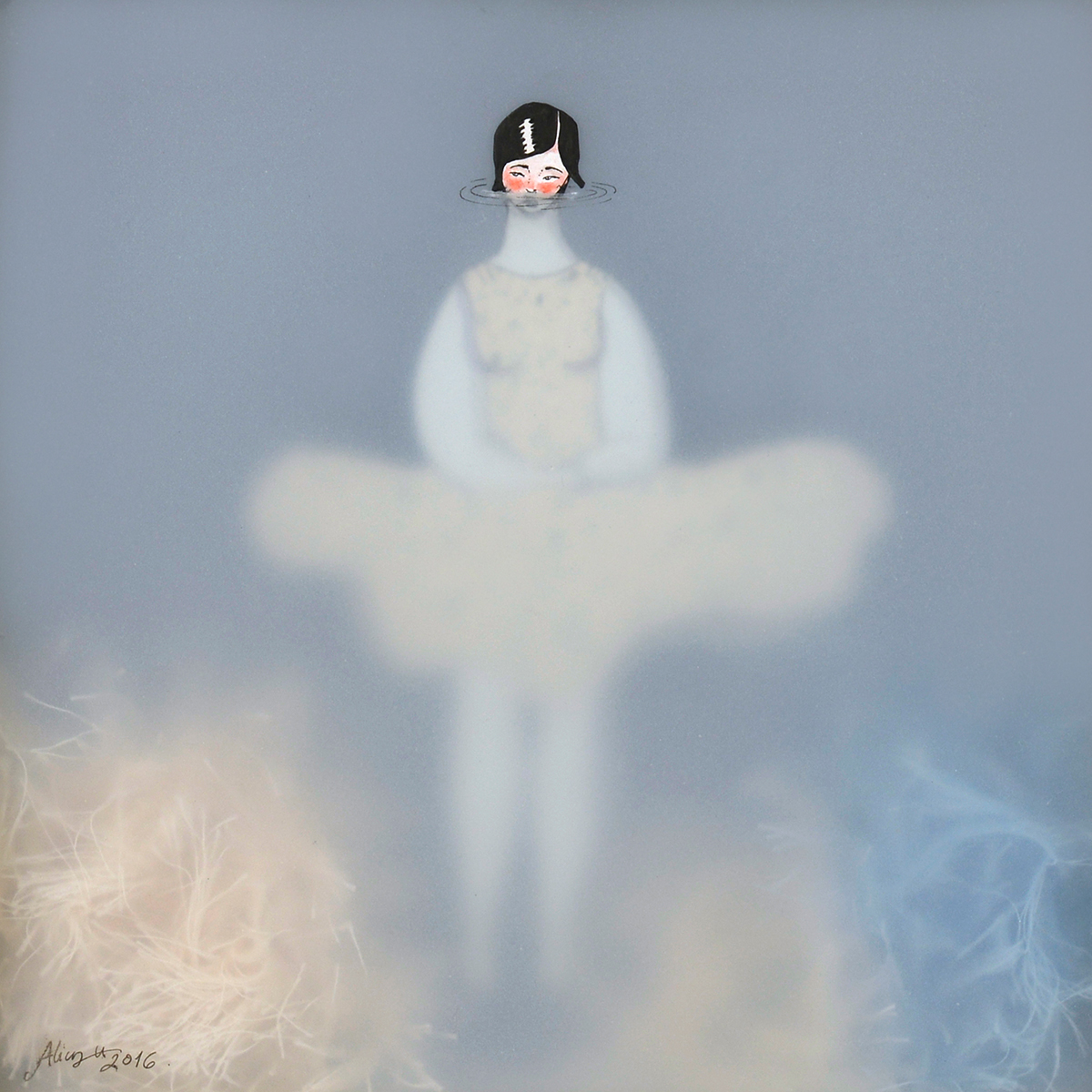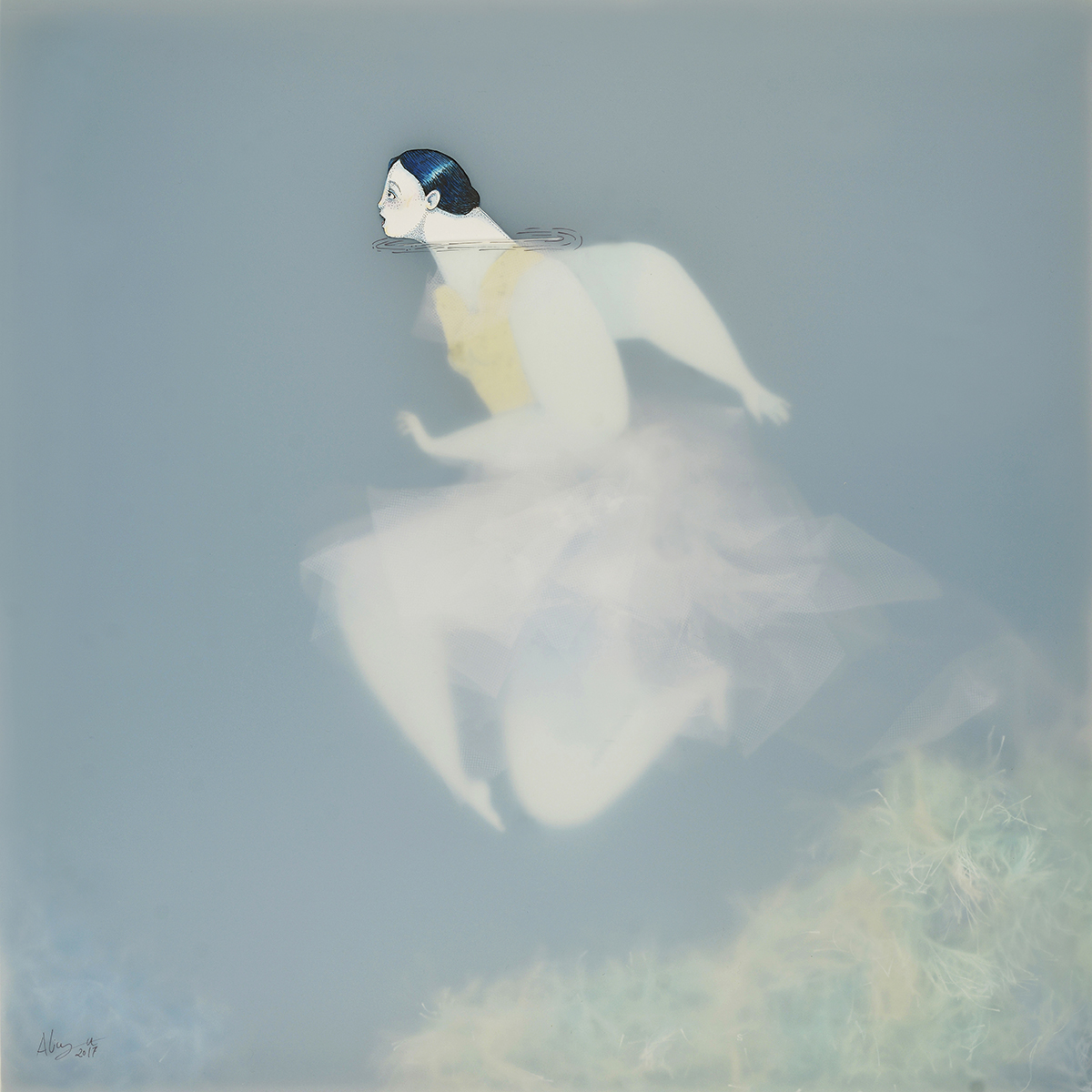
The open water is full of contradictions. It can be a site of rebirth or intense distress; the same place that delivers an idyllic calm can become instantly tempestuous. Because of its conflicting nature, everyone’s relationship to the water is different. Illustrator Sonia Alins touches on these unique connections in her ongoing series titled Dones d’aigua (Water Women).
If you’re a long-time reader of Brown Paper Bag, you’re sure to recognize Sonia’s work. The alluring swimming ladies have captivated me (and many others) for years. They encourage us to ponder the symbolism of the water and specifically, how we relate to her characters. Are you the person that is treading water? Or are you struggling to come up for air?
I spoke to Sonia about her work and what the water means to her. Scroll down to read my interview and then visit Sonia’s Society6 shop.
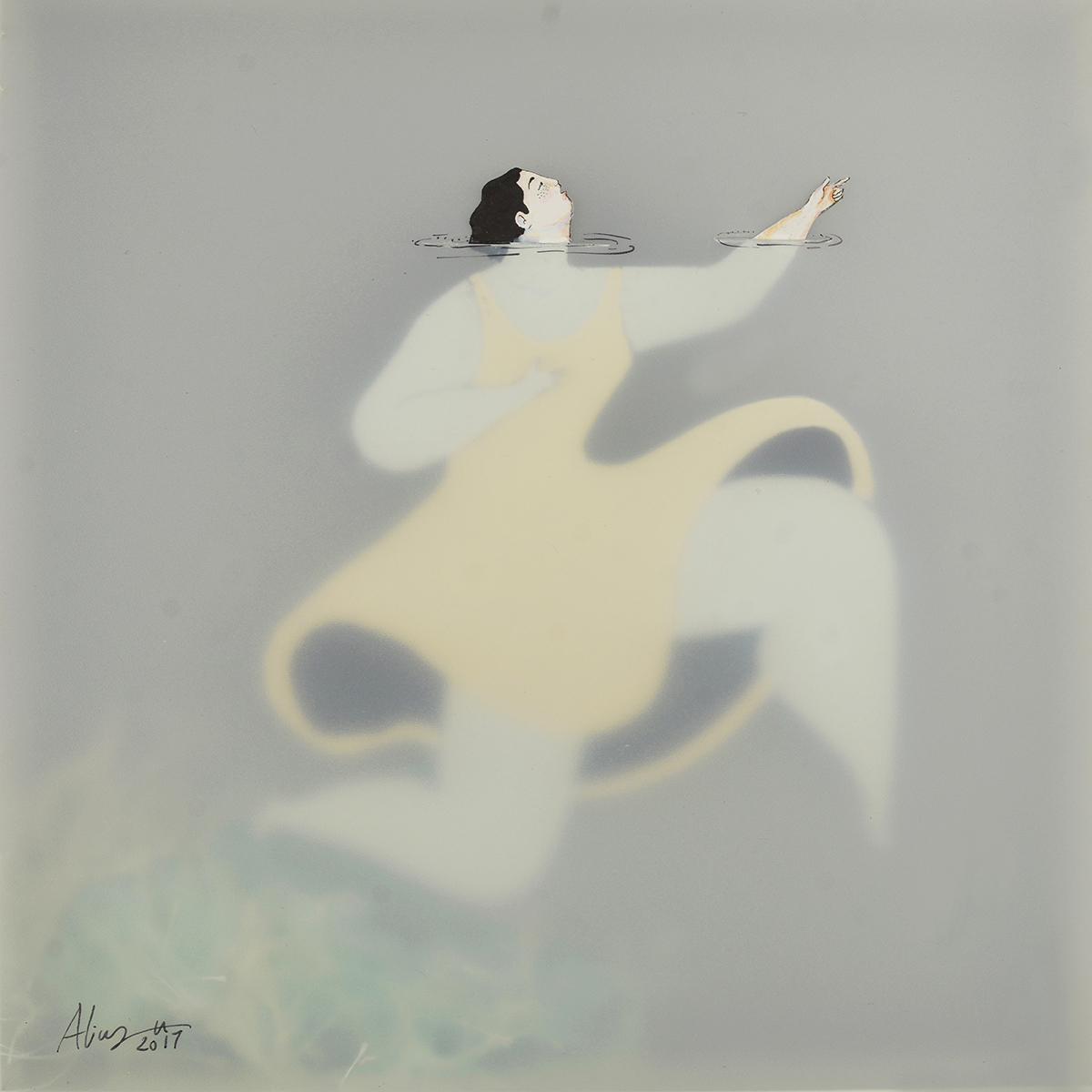
What was the inspiration behind your women in water?
The inspiration to create my Dones d’aigua (Water Women) series came from several elements that had been captivating me for some time. Possibly, the main one was the work of Yves Klein and his blue sponges: I feel a hypnotic attraction to them and the spiritual depth that they suggest to me. Joseph Cornell’s box-shaped collages were also fundamental and really inspiring to me: I feel connected to his dreamlike, surreal, vision of reality, and the poetry in his works: he is the reason why Dones d’aigua are tridimensional collages. Miquel Barceló and his references to the sea were an inspiration to me too. And Jaume Piensa, with his poetic sculptures. I should mention Goya too, whose work I consider a recurring reference in my life.
Apart from that, I love poetry as a medium of expression and I like that my artworks feel like visual poems.
There’s the last reference, which comes from the popular culture in Catalonia, where I was born: The Dones d’aigua are mythological beings that live in waterfalls, lakes, and rivers (a kind of water spirit) and are linked to the life cycle, fertility and (especially related to my work) womanhood.
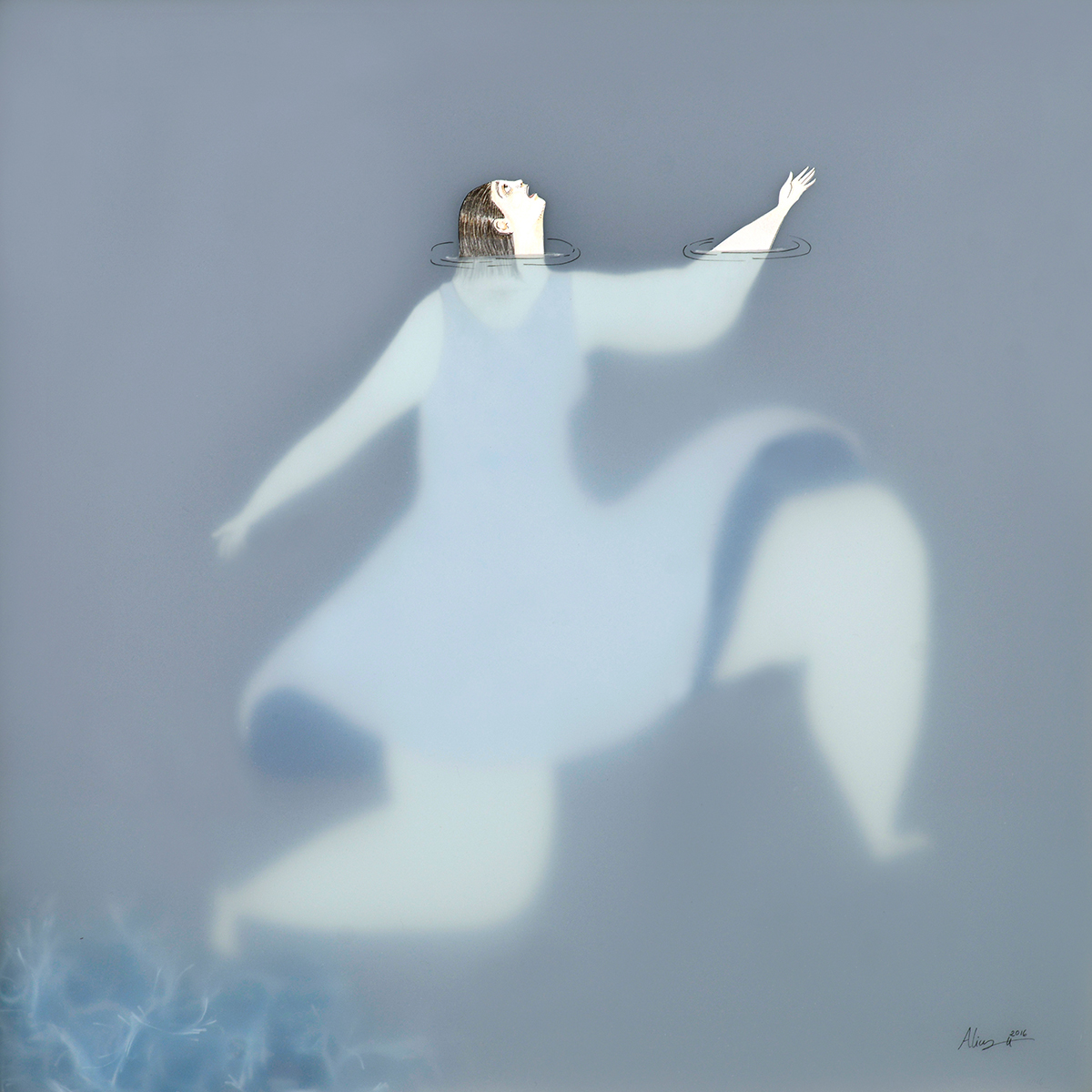
What does the water mean to you?
I was born near the Mediterranean sea and the influence of it and water in my culture is something defining. I guess it’s part of my DNA. The truth is that the sea has always been present in my life and has transmitted a special and positive energy to me.
When taking the first steps of my Dones d’aigua series, water came to me as the perfect medium to communicate and expand emotion. So, the protagonists of my works interact with this mass of water where they are immersed and, there, their feelings are amplified, their shouts are heard louder, their desperation is felt more profoundly… But also, when they are calm, it feels like a more rewarding emotion too.
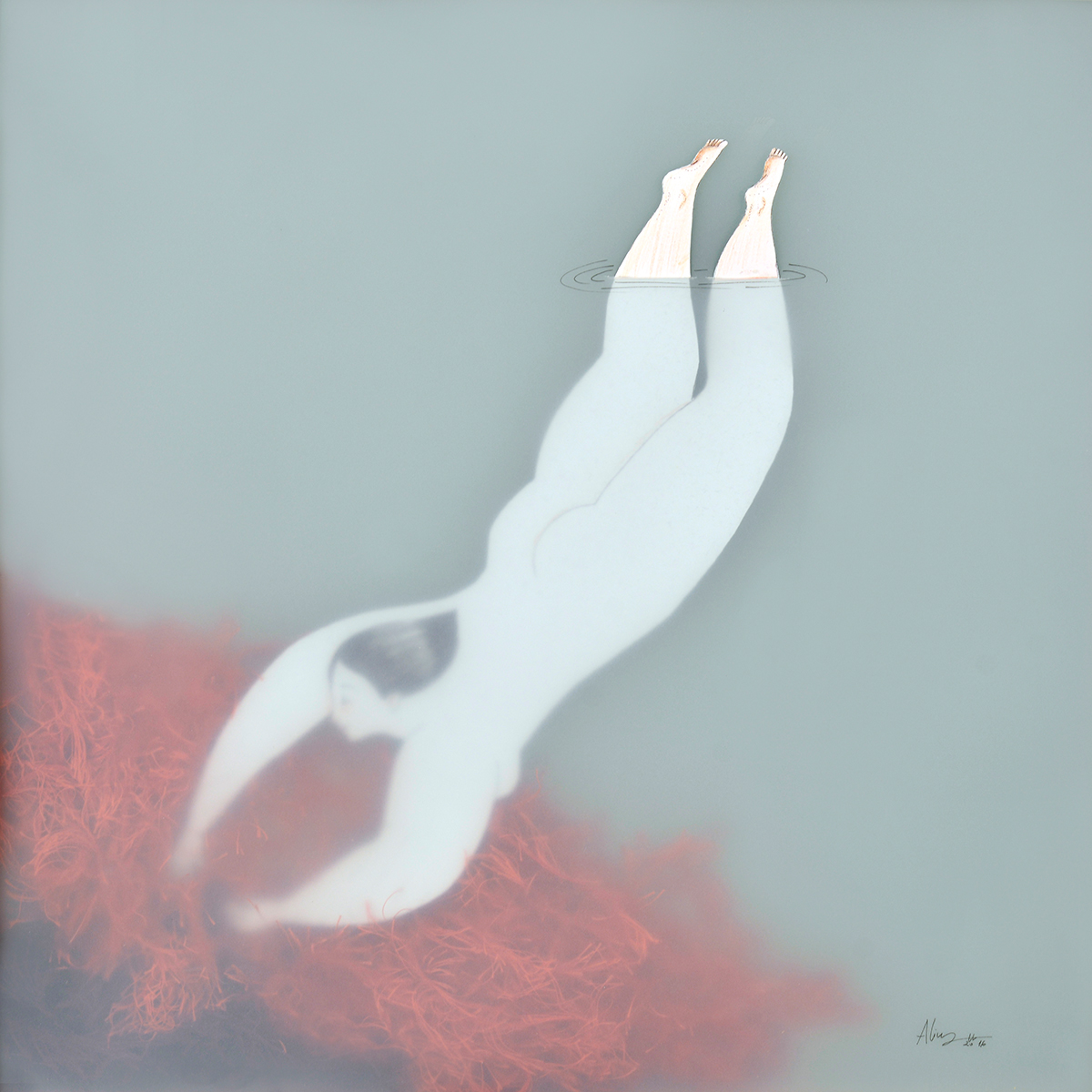
Some women are pictured floundering in the water while others seem at ease. How do you view these opposing states of being?
They are opposing states, but both of them are inside each of us. Water can be calm and quiet but, in a moment, it can become dangerous: in the same way, inside us, there are moments of peace and relax, but also moments of great intensity when we can fear for our security or, even, for our lives. To me, Dones d’aigua has become an aesthetic research on emotions and water as a visual and symbolic element that helps to transmit these emotions: my aim is that, through the physical relationship between the character and the aquatic medium, the viewer can experience the soul of the character, an emotion, her energy: anguish, fear, sorrow, peace, joy.
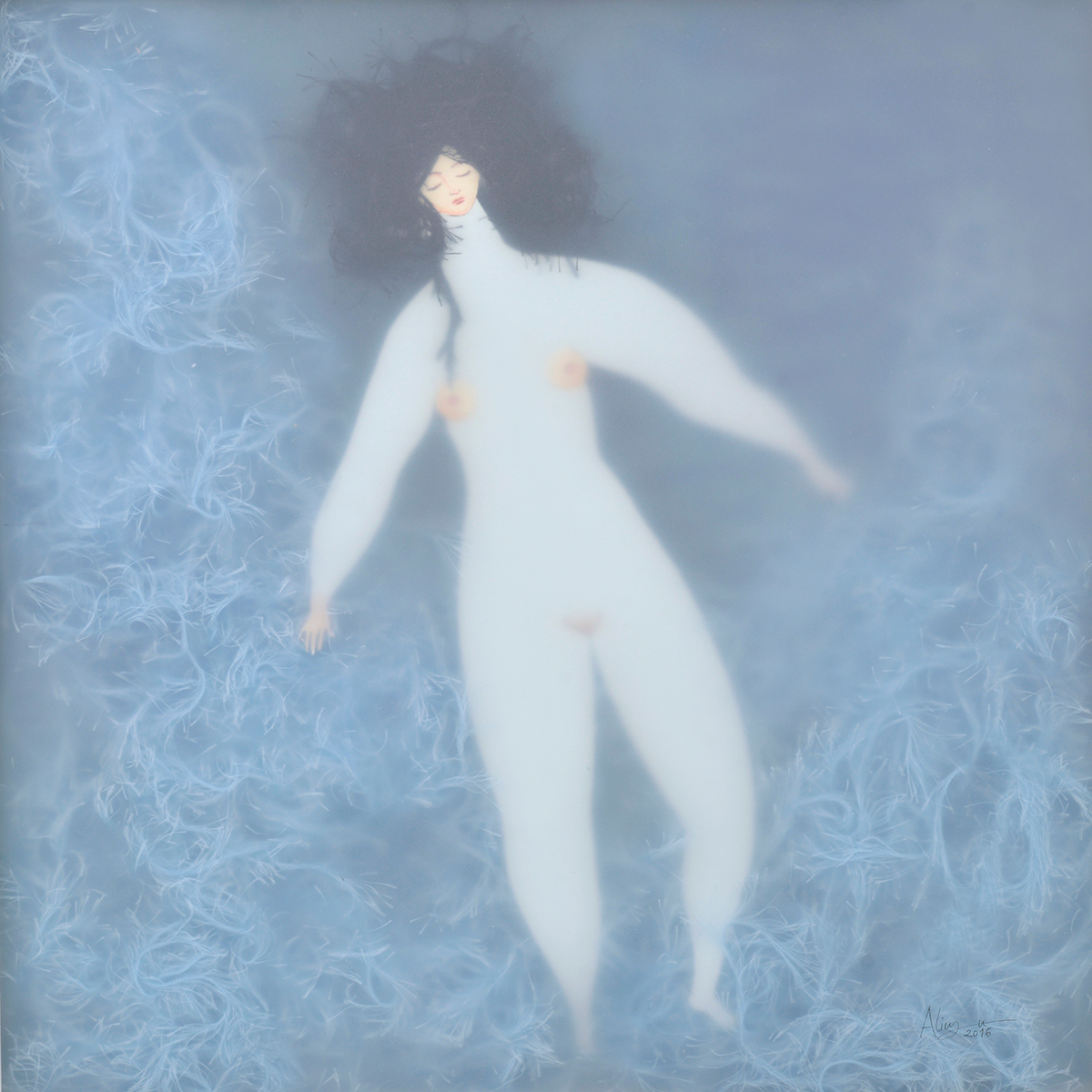
What materials do you use to obscure parts of your figures? Can you give us a peek into the process?
Everything in my projects is prepared manually. It’s great to see how only manipulating simple materials such as paper you can achieve a delicate perception of tridimensionality and an ethereal atmosphere. The artworks look really beautiful in the pictures but, when people see them live, they are surprised by the atmosphere created.
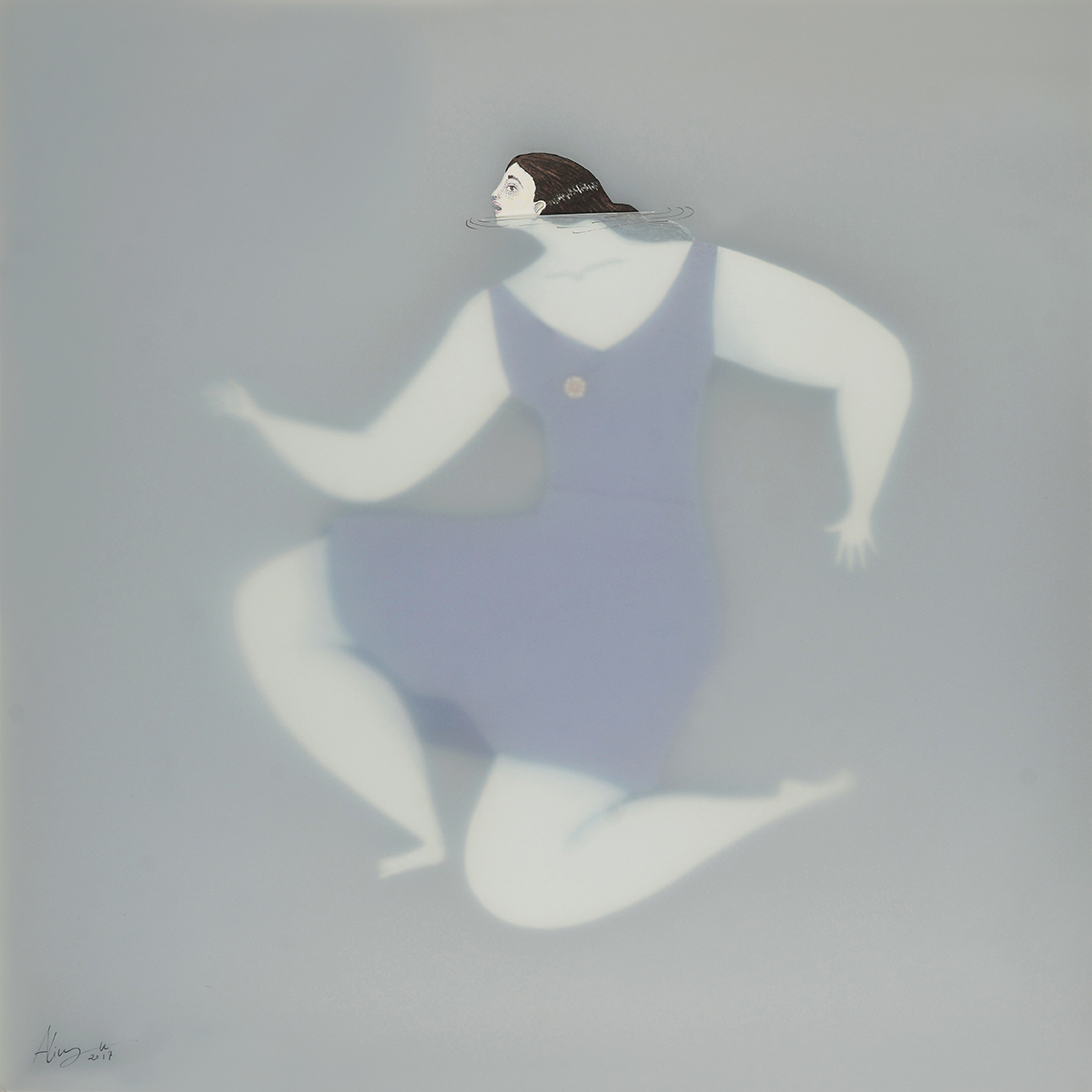
You got your postgraduate degree in illustration after working for many years. What lead you to illustration? How does your training before inform your work today?
I started working as a freelance illustrator after I obtained my Fine Arts degree. Years later, I decided to reinforce my background with an illustration postgraduate in Barcelona: this was an intense and instructive experience that changed my view about my profession and how to approach my career in the future. It really was a turning point for me.
